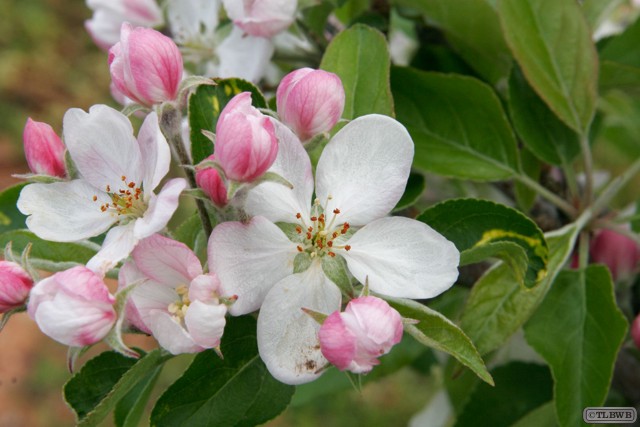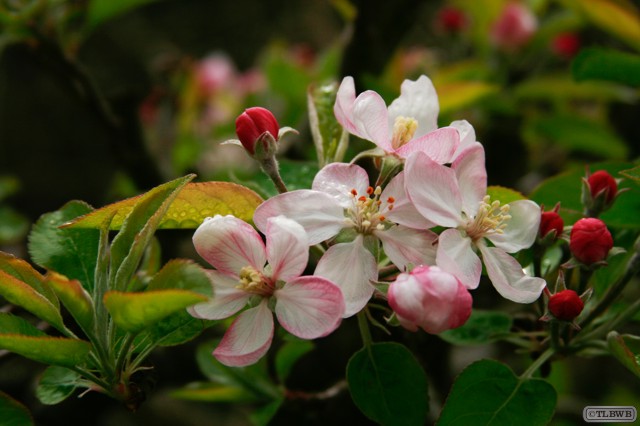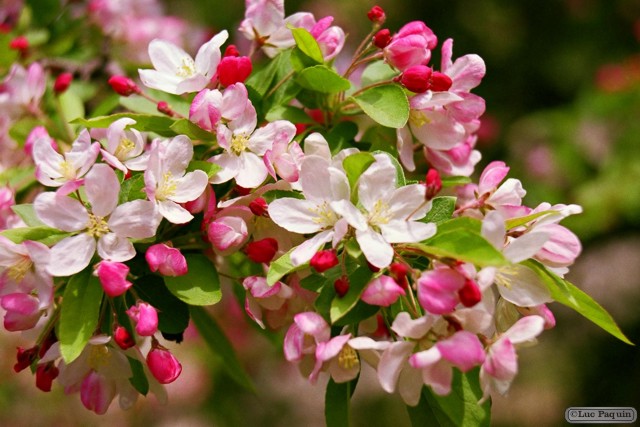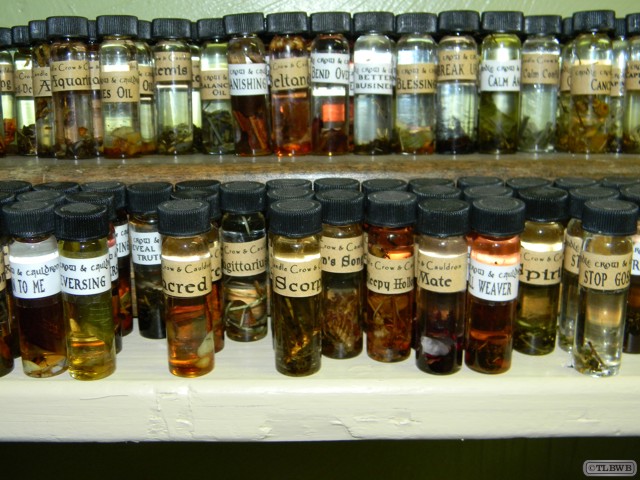Anthroposophy
Esoteric Path
Prerequisites to and Stages of Inner Development
- A person seeking inner development must first of all make the attempt to give up certain formerly held inclinations. Then, new inclinations must be acquired by constantly holding the thought of such inclinations, virtues or characteristics in one’s mind. They must be so incorporated into one’s being that a person becomes enabled to alter his soul by his own will-power. This must be tried as objectively as a chemical might be tested in an experiment. A person who has never endeavored to change his soul, who has never made the initial decision to develop the qualities of endurance, steadfastness and calm logical thinking, or a person who has such decisions but has given up because he did not succeed in a week, a month, a year or a decade, will never conclude anything inwardly about these truths.
-Rudolf Steiner, “On the Inner Life”
Steiner’s stated prerequisites to beginning on a spiritual path include a willingness to take up serious cognitive studies, a respect for factual evidence, and a responsible attitude. Central to progress on the path itself is a harmonious cultivation of the following qualities:
- Control over one’s own thinking
- Control over one’s will
- Composure
- Positivity
- Impartiality
Steiner sees meditation as a concentration and enhancement of the power of thought. By focusing consciously on an idea, feeling or intention the meditant seeks to arrive at pure thinking, a state exemplified by but not confined to pure mathematics. In Steiner’s view, conventional sensory-material knowledge is achieved through relating perception and concepts. The anthroposophic path of esoteric training articulates three further stages of supersensory knowledge, which do not necessarily follow strictly sequentially in any single individual’s spiritual progress.
- By focusing on symbolic patterns, images, and poetic mantras, the meditant can achieve consciously directed Imaginations that allow sensory phenomena to appear as the expression of underlying beings of a soul-spiritual nature.
- By transcending such imaginative pictures, the meditant can become conscious of the meditative activity itself, which leads to experiences of expressions of soul-spiritual beings unmediated by sensory phenomena or qualities. Steiner calls this stage Inspiration.
- By intensifying the will-forces through exercises such as a chronologically reversed review of the day’s events, the meditant can achieve a further stage of inner independence from sensory experience, leading to direct contact, and even union, with spiritual beings (“Intuition”) without loss of individual awareness.
Spiritual Exercises
Steiner described numerous exercises he believed would bring spiritual development; other anthroposophists have added many others. A central principle is that “for every step in spiritual perception, three steps are to be taken in moral development.” According to Steiner, moral development reveals the extent to which one has achieved control over one’s inner life and can exercise it in harmony with the spiritual life of other people; it shows the real progress in spiritual development, the fruits of which are given in spiritual perception. It also guarantees the capacity to distinguish between false perceptions or illusions (which are possible in perceptions of both the outer world and the inner world) and true perceptions: i.e., the capacity to distinguish in any perception between the influence of subjective elements (i.e., viewpoint) and objective reality.
Luc Paquin
In botany, blossom is a term given to the flowers of stone fruit trees (genus Prunus) and of some other plants with a similar appearance that flower profusely for a period of time in spring.
Colloquially flowers of orange are referred to as such as well. Peach blossoms (including nectarine), most cherry blossoms, and some almond blossoms are usually pink. Plum blossoms, apple blossoms, orange blossoms, some cherry blossoms, and most almond blossoms are white.
Blossoms provide pollen to pollinators such as bees, and initiate cross-pollination necessary for the trees to reproduce by producing fruit.
Blossom trees have a tendency to lose their flower petals in wind-blown cascades, often covering the surrounding ground in petals. This attribute tends to distinguish blossom trees from other flowering trees.
Wiccan Uses
For the ancients, the apple was considered a symbol of immortality. Interestingly, it’s also seen as a food for the dead, which is why Samhain is sometimes referred to as the Feast of Apples. In Celtic myth, an apple branch bearing grown fruit, flowers, and unopened bud was a magical key to the land of the Underworld. The apple is often found as a component in love magic, and the blossoms may be added to incenses and brews.
The Lost Bearded White Brother
Anthroposophy
Social Goals
For a period after World War I, Steiner was extremely active and well known in Germany, in part because he lectured widely proposing social reforms. Steiner was a sharp critic of nationalism, which he saw as outdated, and a proponent of achieving social solidarity through individual freedom. A petition proposing a radical change in the German constitution and expressing his basic social ideas (signed by Herman Hesse, among others) was widely circulated. His main book on social reform is Toward Social Renewal.
Anthroposophy continues to aim at reforming society through maintaining and strengthening the independence of the spheres of cultural life, human rights and the economy. It emphasizes a particular ideal in each of these three realms of society:
- Freedom in cultural life
- Equality of rights, the sphere of legislation and the judiciary
- Fraternity in the economic sphere
Esoteric Path
Paths of Spiritual Development
According to Steiner, a real spiritual world exists, out of which the material one gradually condensed and evolved. Steiner held that the spiritual world can be researched in the right circumstances through direct experience, by persons practicing rigorous forms of ethical and cognitive self-discipline. Steiner described many exercises he said were suited to strengthening such self-discipline; the most complete exposition of these is found in his book How To Know Higher Worlds. The aim of these exercises is to develop higher levels of consciousness through meditation and observation. Details about the spiritual world, Steiner suggested, could on such a basis be discovered and reported, though no more infallibly than the results of natural science.
- Anthroposophy is a path of knowledge, to guide the spiritual in the human being to the spiritual in the universe…. Anthroposophists are those who experience, as an essential need of life, certain questions on the nature of the human being and the universe, just as one experiences hunger and thirst.
Steiner regarded his research reports as being important aids to others seeking to enter into spiritual experience. He suggested that a combination of spiritual exercises (for example, concentrating on an object such as a seed), moral development (control of thought, feelings and will combined with openness, tolerance and flexibility) and familiarity with other spiritual researchers’ results would best further an individual’s spiritual development. He consistently emphasised that any inner, spiritual practice should be undertaken in such a way as not to interfere with one’s responsibilities in outer life. Steiner distinguished between what he considered were true and false paths of spiritual investigation.
In anthroposophy, artistic expression is also treated as a potentially valuable bridge between spiritual and material reality.
Luc Paquin
Causes
The most common cause of aphasia is brain damage resulting from a stroke — the blockage or rupture of a blood vessel in the brain. Loss of blood to the brain leads to brain cell death or damage in areas that control language.
Brain damage caused by a severe head injury, a tumor, an infection or a degenerative process also can cause aphasia. In these cases, the aphasia usually occurs with other types of cognitive problems, such as memory problems or confusion.
Primary progressive aphasia is the term used for language difficulty that develops gradually. This is due to the gradual degeneration of brain cells located in the language networks. Sometimes this type of aphasia will progress to a more generalized dementia.
Sometimes temporary episodes of aphasia can occur. These can be due to migraines, seizures or a transient ischemic attack (TIA). A TIA occurs when blood flow is temporarily blocked to an area of the brain. People who’ve had a TIA are at an increased risk of having a stroke in the near future.
Complications
Aphasia can create numerous quality-of-life problems because communication is so much a part of your life. Communication difficulty may affect your:
- Job
- Relationships
- Day-to-day function
Language barriers may lead to embarrassment, depression and relationship problems.
Norma
Anthroposophy
Applications
Special Needs Education and Services
In 1922, Ita Wegman founded an anthroposophical center for special needs education, the Sonnenhof, in Switzerland. In 1940, Karl König founded the Camphill Movement in Scotland. The latter in particular has spread widely, and there are now over a hundred Camphill communities and other anthroposophical homes for children and adults in need of special care in about 22 countries around the world. Both Karl König, Thomas Weihs and others have written extensively on these ideas underlying Special education.
Architecture
Steiner himself designed around thirteen buildings, many of them significant works in a unique, organic – expressionist architectural style. Foremost among these are his designs for the two Goetheanum buildings in Dornach, Switzerland. Thousands of further buildings have been built by later generations of anthroposophic architects.
Architects who have been strongly influenced by the anthroposophic style include Imre Makovecz in Hungary, Hans Scharoun and Joachim Eble in Germany, Erik Asmussen in Sweden, Kenji Imai in Japan, Thomas Rau, Anton Alberts and Max van Huut in the Netherlands, Christopher Day and Camphill Architects in the UK, Thompson and Rose in America, Denis Bowman in Canada, and Walter Burley Griffin and Gregory Burgess in Australia.
One of the most famous contemporary buildings by an anthroposophical architect is ING House, an ING Bank building in Amsterdam, which has received several awards for its ecological design and approach to a self-sustaining ecology as an autonomous building and example of sustainable architecture.
Eurythmy
In the arts, Steiner’s new art of eurythmy gained early renown. Eurythmy seeks to renew the spiritual foundations of dance, revealing speech and music in visible movement. There are now active stage groups and training centers, mostly of modest proportions, in approximately 16 countries.
Social Finance
Around the world today are a number of banks, companies, charities, and schools for developing co-operative forms of business using Steiner’s ideas about economic associations, aiming at harmonious and socially responsible roles in the world economy. The first anthroposophic bank was the Gemeinschaftsbank für Leihen und Schenken in Bochum, Germany, founded in 1974. Socially responsible banks founded out of anthroposophy in the English-speaking world include Triodos Bank, founded in 1980 and active in the UK, Netherlands, Germany, Belgium, and Spain, La Nef in France and RSF Social Finance in San Francisco.
Organizational Development, Counselling and Biography Work
Bernard Lievegoed, a psychiatrist, founded a new method of individual and institutional development oriented towards humanizing organizations and linked with Steiner’s ideas of the threefold social order. This work is represented by the NPI Institute for Organizational Development in the Netherlands and sister organizations in many other countries. Various forms of biographic and counselling work have been developed on the basis of anthroposophy.
Speech and Drama
There are also anthroposophical movements to renew speech and drama, the most important of which are based in the work of Marie Steiner-von Sivers (speech formation, also known as Creative Speech) and the Chekhov Method originated by Michael Chekhov (nephew of Anton Chekhov).
Luc Paquin
In general use, herbs are any plants used for food, flavoring, medicine, or perfume. Culinary use typically distinguishes herbs from spices. Herbs refer to the leafy green parts of a plant (either fresh or dried), while a “spice” is a product from another part of the plant (usually dried), including seeds, berries, bark, roots and fruits.
In American botanical English the word “herb” is also used as a synonym of “herbaceous plant”.
Herbs have a variety of uses including culinary, medicinal, and in some cases spiritual usage. General usage of the term “herb” differs between culinary herbs and medicinal herbs. In medicinal or spiritual use any of the parts of the plant might be considered “herbs”, including leaves, roots, flowers, seeds, resin, root bark, inner bark (and cambium), berries and sometimes the pericarp or other portions of the plant.
Sacred Herbs
Herbs are used in many religions. For example, myrrh (Commiphora myrrha) and frankincense (Boswellia species) in Hellenistic religion, the nine herbs charm in Anglo-Saxon paganism, neem (Azadirachta indica) leaves, bael (Aegele marmelos) leaves, holy basil or tulsi (Ocimum tenuiflorum), turmeric or “haldi” (Curcuma longa), and cannabis in Hinduism. Rastafari also consider cannabis to be a holy plant.
Siberian shamans also used herbs for spiritual purposes. Plants may be used to induce spiritual experiences for rites of passage, such as vision quests in some Native American cultures. The Cherokee Native Americans use both white sage and cedar for spiritual cleansing and smudging.
Herbs and Wicca
Magical herbs have played a very intricate role in Wiccan religion for centuries. They are used throughout the craft for smudging in cleansing rituals, healing the sick, charm bags and in spell work. Pure essential oils are extracted from them for use in spell work and in aromatherapy. They can be burned as herbal incense, embedded in homemade candles or applied to the surface of oiled candles for use in candle magic.
The Lost Bearded White Brother
Anthroposophy
Applications
Applications of Anthroposophy Include:
- Phenomenological approaches to science,
- New approaches to painting and sculpture.
- John Wilkes’ fountain-like flowforms. These sculptural forms guide water into rhythmic movement and are used both in water-purification projects and decoratively.
Steiner/Waldorf Education
This is a pedagogical movement with over 1000 Steiner or Waldorf schools (the latter name stems from the first such school, founded in Stuttgart in 1919) located in some 60 countries; the great majority of these are independent (private) schools. Sixteen of the schools have been affiliated with the United Nations’ UNESCO Associated Schools Project Network, which sponsors education projects that foster improved quality of education throughout the world, in particular in terms of its ethical, cultural, and international dimensions. Waldorf schools receive full or partial governmental funding in some European nations, Australia and in parts of the United States (as Waldorf method public or charter schools).
The schools are located in a wide variety of communities and cultures: from the impoverished favelas of São Paulo to the wealthy suburbs of New York City; in India, Egypt, Australia, the Netherlands, Mexico and South Africa. Though most of the early Waldorf schools were teacher-founded, the schools today are usually initiated and later supported by an active parent community. Waldorf education is one of the most visible practical applications of an anthroposophical view and understanding of the human being and has been characterized as “the leader of the international movement for a New Education”.
Biodynamic Agriculture
Biodynamic agriculture, the first intentional form of organic farming, began in the 1920s when Rudolf Steiner gave a series of lectures since published as Agriculture. Steiner is considered one of the founders of the modern organic farming movement.
Anthroposophical Medicine
Steiner gave several series of lectures to physicians and medical students. Out of those grew a complementary medical movement intending to “extend the knowledge gained through the methods of the natural sciences of the present age with insights from spiritual science.” This movement now includes hundreds of M.D.s, chiefly in Europe and North America, and has its own clinics, hospitals, and medical schools.
One of the most studied applications has been the use of mistletoe extracts in cancer therapy. The extracts are generally no longer used to reduce or inhibit tumor growth, for which verifiable results have been found in vitro and in animal studies but not in humans, but instead to improve the patients’ quality of life and to reduce tumor-induced symptoms and the side-effects of chemotherapy and radiotherapy. According to the National Cancer Institute, “Mistletoe extract has been shown to kill cancer cells in the laboratory and to affect the immune system. However, there is limited evidence that mistletoe’s effects on the immune system help the body fight cancer…. At present, the use of mistletoe cannot be recommended outside the context of well-designed clinical trials.”
Several pharmaceutical companies have grown out of anthroposophical medicine, including Weleda, Wala, and Dr. Hauschka.
Luc Paquin
Definition
Aphasia is a condition that robs you of the ability to communicate. It can affect your ability to speak, write and understand language, both verbal and written.
Aphasia typically occurs suddenly after a stroke or a head injury. But it can also come on gradually from a slow-growing brain tumor or a disease that causes progressive, permanent damage (degenerative). Where and how bad the brain damage is and what caused it determine the degree of disability.
Once the cause has been addressed, the main treatment for aphasia is speech and language therapy. The person with aphasia relearns and practices language skills and learns to use other ways to communicate. Family members often participate in the process, helping the person communicate.
Symptoms
Aphasia is a sign of some other condition, such as a stroke or a brain tumor.
A person with aphasia may:
- Speak in short or incomplete sentences
- Speak in sentences that don’t make sense
- Substitute one word for another or one sound for another
- Speak unrecognizable words
- Not understand other people’s conversation
- Write sentences that don’t make sense
The severity and scope of the problems depend on the extent of damage and the area of the brain affected.
Types of aphasia
Your doctor may refer to aphasia as nonfluent, fluent or global:
- Nonfluent aphasia. Damage to the language network near the left frontal area of the brain usually results in Broca aphasia, which is also called nonfluent aphasia. People with this disorder struggle to get words out, speak in very short sentences and omit words. A person might say “Want food” or “Walk park today.” A listener can usually understand the meaning.
People with Broca aphasia may understand what other people say better than they can speak. They’re often aware of their difficulty communicating and may get frustrated. People with Broca aphasia may also have right-sided paralysis or weakness.
- Fluent aphasia. People with this form of aphasia may speak easily and fluently in long, complex sentences that don’t make sense or include unrecognizable, incorrect or unnecessary words. They usually don’t understand spoken language well and often don’t realize that others can’t understand them. Also known as Wernicke aphasia, this type of aphasia is the result of damage to the language network in the middle left side of the brain.
- Global aphasia. Global aphasia results from extensive damage to the brain’s language networks. People with global aphasia have severe disabilities with expression and comprehension.
When to see a doctor
Because aphasia is often a sign of a serious problem, such as a stroke, seek emergency medical care if you suddenly develop:
- Difficulty speaking
- Trouble understanding speech
- Difficulty with word recall
- Problems with reading or writing
Norma
Anthroposophy
Central Ideas
Nature of the Human Being
In Theosophy, Steiner suggested that human beings unite a physical body of a nature common to (and that ultimately returns to) the inorganic world; a life body (also called the etheric body), in common with all living creatures (including plants); a bearer of sentience or consciousness (also called the astral body), in common with all animals; and the ego, which anchors the faculty of self-awareness unique to human beings.
Anthroposophy describes a broad evolution of human consciousness. Early stages of human evolution possess an intuitive perception of reality, including a clairvoyant perception of spiritual realities. Humanity has progressively evolved an increasing reliance on intellectual faculties and a corresponding loss of intuitive or clairvoyant experiences, which have become atavistic. The increasing intellectualization of consciousness, initially a progressive direction of evolution, has led to an excessive reliance on abstraction and a loss of contact with both natural and spiritual realities. However, to go further requires new capacities that combine the clarity of intellectual thought with the imagination, and beyond this with consciously achieved inspiration and intuitive insights.
Anthroposophy speaks of the reincarnation of the human spirit: that the human being passes between stages of existence, incarnating into an earthly body, living on earth, leaving the body behind and entering into the spiritual worlds before returning to be born again into a new life on earth. After the death of the physical body, the human spirit recapitulates the past life, perceiving its events as they were experienced by the objects of its actions. A complex transformation takes place between the review of the past life and the preparation for the next life. The individual’s karmic condition eventually leads to a choice of parents, physical body, disposition, and capacities that provide the challenges and opportunities that further development requires, which includes karmically chosen tasks for the future life.
Steiner described some conditions that determine the interdependence of a person’s lives, or karma.
Evolution
The anthroposophical view of evolution considers all animals to have evolved from an early, unspecialized form. As the least specialized animal, human beings have maintained the closest connection to the archetypal form; contrary to the Darwinian conception of human evolution, all other animals devolve from this archetype. The spiritual archetype originally created by spiritual beings was devoid of physical substance; only later did this descend into material existence on Earth. In this view, human evolution has accompanied the Earth’s evolution throughout the existence of the Earth.
The evolution of man, Steiner said, has consisted in the gradual incarnation of a spiritual being into a material body. It has been a true “descent” of man from a spiritual world into a world of matter. The evolution of the animal kingdom did not precede, but rather accompanied the process of human incarnation. Man is thus not the end result of the evolution of the animals, but is rather in a certain sense their cause. In the succession of types which appears in the fossil record-the fishes, reptiles, mammals, and finally fossil remains of man himself – the stages of this process of incarnation are reflected.
Anthroposophy took over from Theosophy a complex system of cycles of world development and human evolution. The evolution of the world is said to have occurred in cycles. The first phase of the world consisted only of heat. In the second phase, a more active condition, light, and a more condensed, gaseous state separate out from the heat. In the third phase, a fluid state arose, as well as a sounding, forming energy. In the fourth (current) phase, solid physical matter first exists. This process is said to have been accompanied by an evolution of consciousness which led up to present human culture.
Ethics
The anthroposophical view is that good is found in the balance between two polar, generally evil influences on world and human evolution. Two spiritual adversaries endeavour to tempt and corrupt humanity: these are often described through their mythological embodiments, Lucifer and his counterpart Ahriman, which have both positive and negative aspects. Lucifer is the light spirit, which “plays on human pride and offers the delusion of divinity”, but also motivates creativity and spirituality; Ahriman is the dark spirit, which tempts human beings to “…deny [their] link with divinity and to live entirely on the material plane”, but also stimulates intellectuality and technology. Both figures exert a negative effect on humanity when their influence becomes misplaced or one-sided, yet their influences are necessary for human freedom to unfold.
Each human being has the task to find a balance between these opposing influences, and each is helped in this task by the mediation of the Representative of Humanity, also known as the Christ being, a spiritual entity who stands between and harmonizes the two extremes.
Luc Paquin
An essential oil is a concentrated hydrophobic liquid containing volatile aroma compounds from plants. Essential oils are also known as volatile oils, ethereal oils, aetherolea, or simply as the “oil of” the plant from which they were extracted, such as oil of clove. An oil is “essential” in the sense that it contains the “essence of” the plant’s fragrance – the characteristic fragrance of the plant from which it is derived.
Essential oils are generally extracted by distillation, often by using steam. Other processes include expression or solvent extraction. They are used in perfumes, cosmetics, soaps and other products, for flavoring food and drink, and for adding scents to incense and household cleaning products.
Essential oils have been used medicinally in history. Medical applications proposed by those who sell medicinal oils range from skin treatments to remedies for cancer and often are based solely on historical accounts of use of essential oils for these purposes. Claims for the efficacy of medical treatments, and treatment of cancers in particular, are now subject to regulation in most countries.
As the use of essential oils has declined in evidence-based medicine, one must consult older textbooks for much information on their use. Modern works are less inclined to generalize; rather than refer to “essential oils” as a class at all, they prefer to discuss specific compounds, such as methyl salicylate, rather than “oil of wintergreen”.
Interest in essential oils has revived in recent decades with the popularity of aromatherapy, a branch of alternative medicine that claims that essential oils and other aromatic compounds have curative effects. Oils are volatilized or diluted in a carrier oil and used in massage, diffused in the air by a nebulizer, heated over a candle flame, or burned as incense.
Magical Oils
Our ancestors used oils in ceremony and ritual hundreds and even thousands of years ago. Because many essential oils are still available, we can continue making our own blends today. In the past, oils were created by placing oil or fat over a heat source, and then adding fragrant herbs and flowers to the oil. Many companies today offer synthetic oils at a fraction of the cost of essential oils (essential oils are the ones actually extracted from a plant).
However, for magical purposes it’s best to use authentic, essential oils – these contain the magical properties of the plant, which synthetic oils do not have.
While many commercial vendors would have you believe that there’s some Super Secret Magical Method for blending oils, it’s actually pretty simple. First, determine your intent – whether you’re creating a money oil to bring you prosperity, a love oil to boost your romantic encounters, or a ritual oil to use in ceremonies.
The Lost Bearded White Brother












